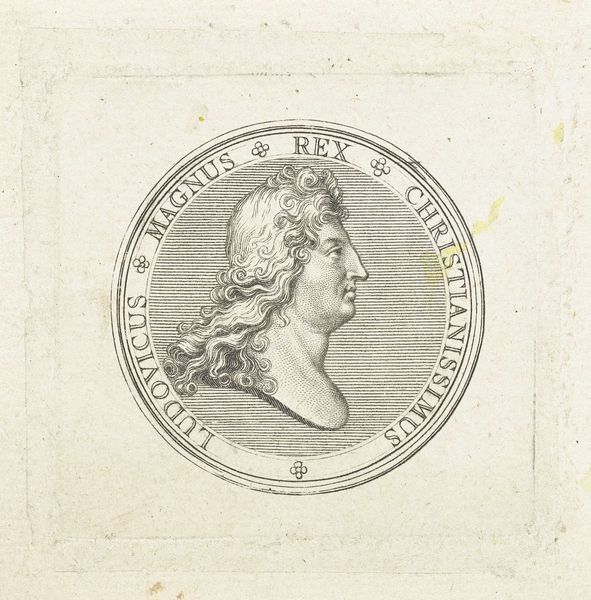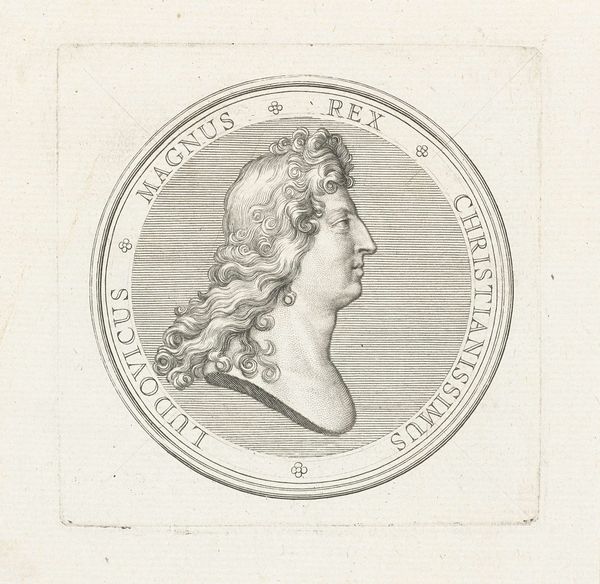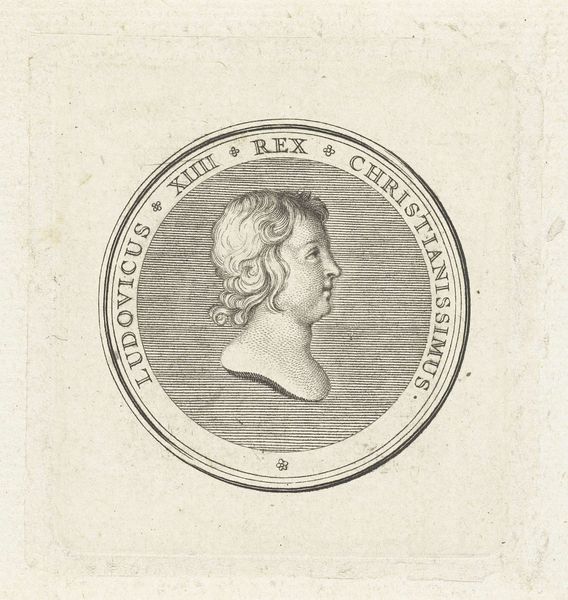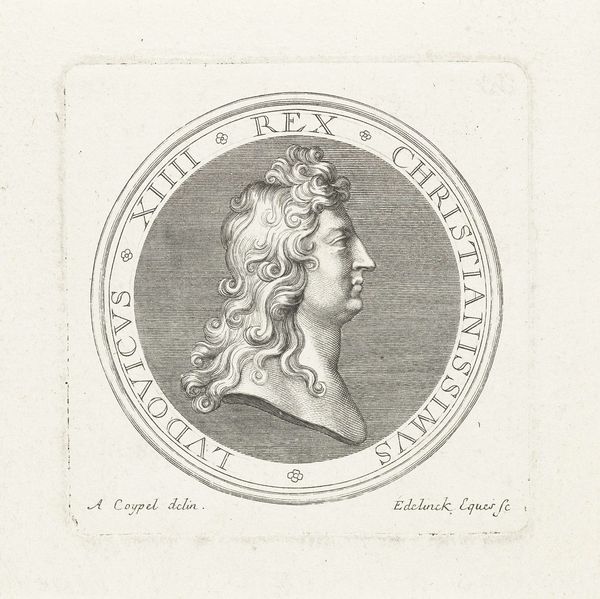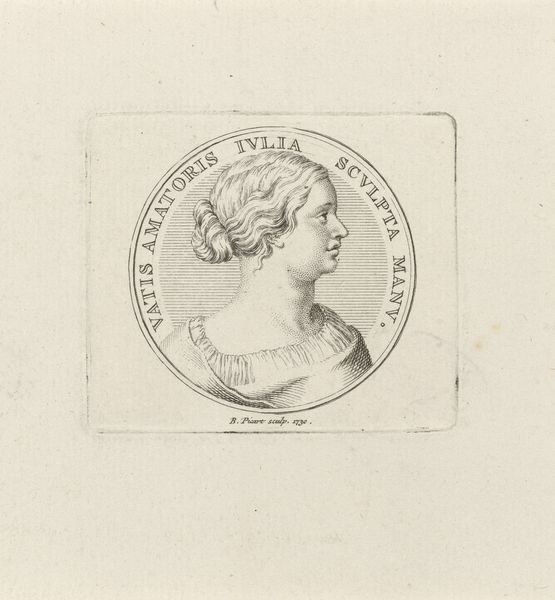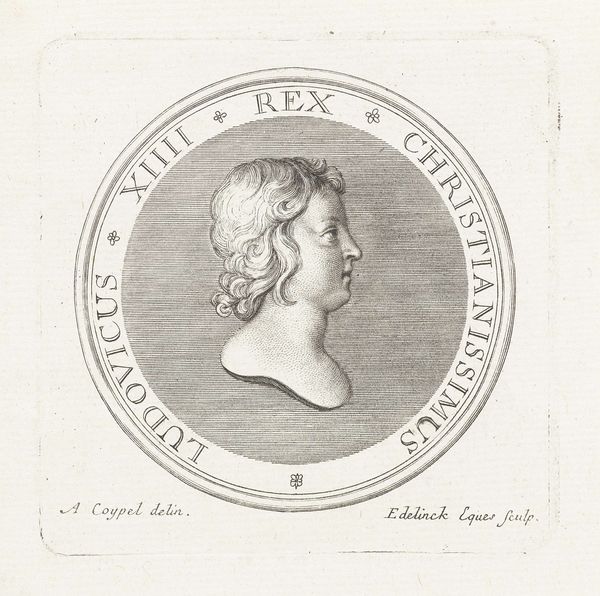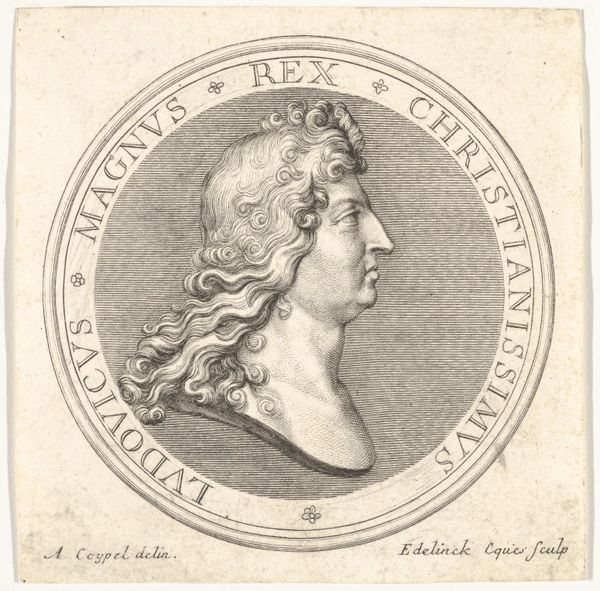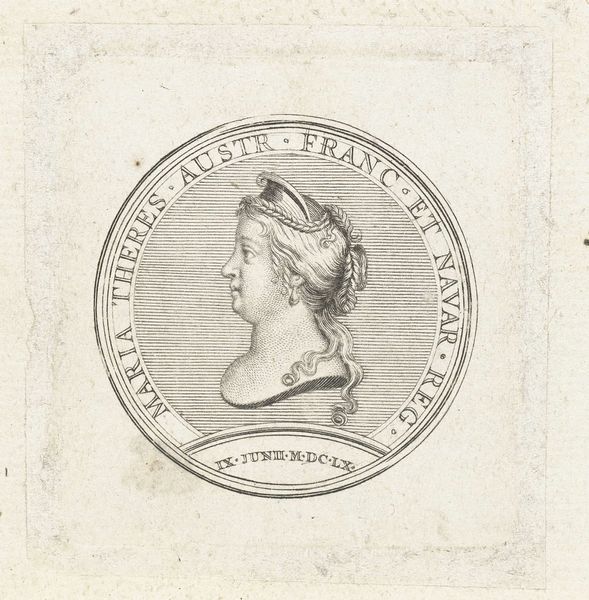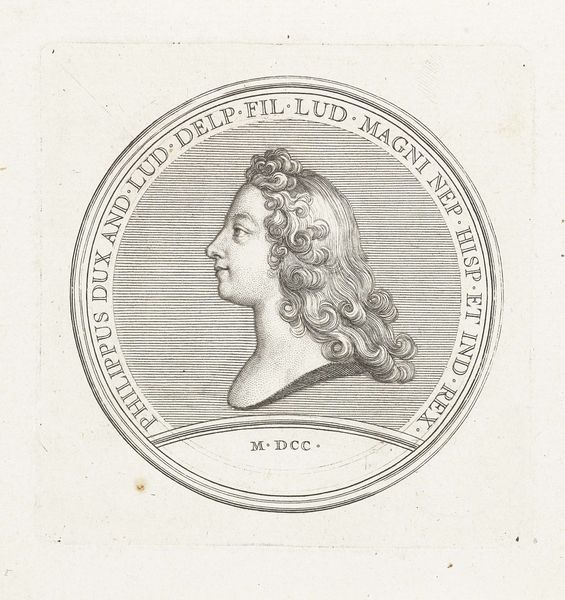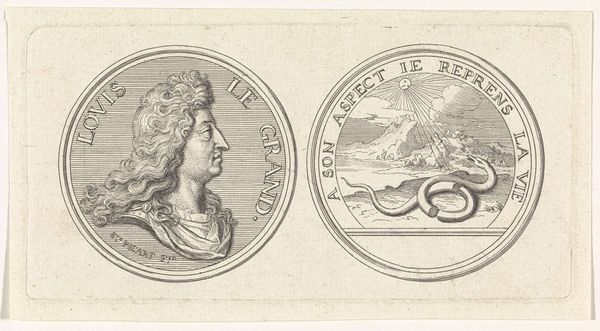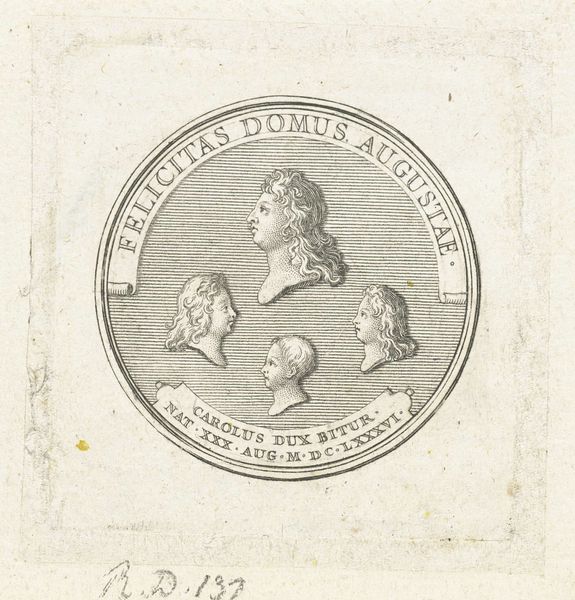
print, engraving
#
portrait
#
aged paper
#
toned paper
#
light pencil work
#
baroque
# print
#
old engraving style
#
hand drawn type
#
personal sketchbook
#
golden font
#
engraving
Dimensions: height 57 mm, width 54 mm
Copyright: Rijks Museum: Open Domain
Editor: This engraving from 1702, "Penning met buste van Lodewijk XIV" by Gérard Edelinck, strikes me as an attempt to immortalize a powerful figure, but the stark lines feel somewhat cold. What symbols or cultural memory do you see embedded within this portrait? Curator: Indeed. Notice how Louis XIV is framed within the circular medal – a classic symbol of power and permanence dating back to Roman emperors. The inscription *Ludovicus Magnus Rex Christianissimus* proclaims him "Louis the Great, Most Christian King." These are potent symbols. But more subtle is how Edelinck uses line and texture. The horizontal lines behind the portrait, combined with the crisp engraving style evoke the ideals of reason and order that characterized Louis’ reign. Editor: Reason and order, yes, that's an interesting contrast to the flowing hair, which seems deliberately elaborate. Curator: Precisely! The flowing wig is not merely a fashion statement. What might it represent? Think of the Sun King’s self-image… Editor: Extravagance, maybe? An outward show of power intended to dazzle and intimidate, a contrast to any true interior life. Curator: Good. So it’s more than vanity; it's visual rhetoric. Consider also the eight-petal rosettes dividing the inscription. Are these purely decorative? Or do they hold deeper significance? Editor: They give a sense of completion to the work, a visual rhyme with the circular medallion itself. It makes you consider Louis' reign as not just a snapshot in time, but as a cyclical historical event. I didn’t consider all the ways the elements interact and enhance each other before! Curator: Images have complex work to do, layering meaning across time. That interplay between the symbol, the line, and the historical context reveals more about both the king and the artist who immortalized him.
Comments
No comments
Be the first to comment and join the conversation on the ultimate creative platform.
